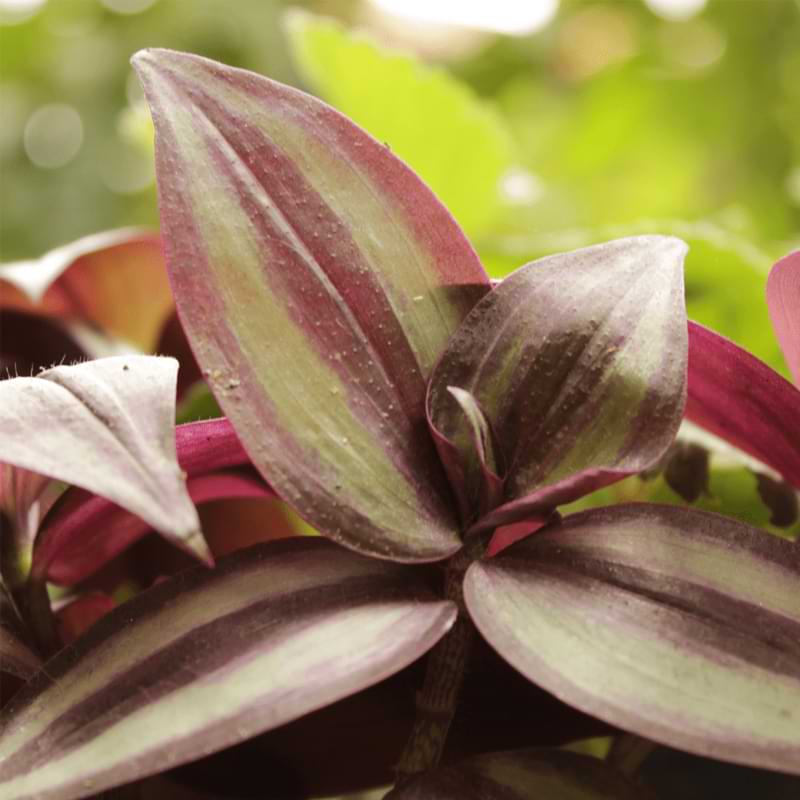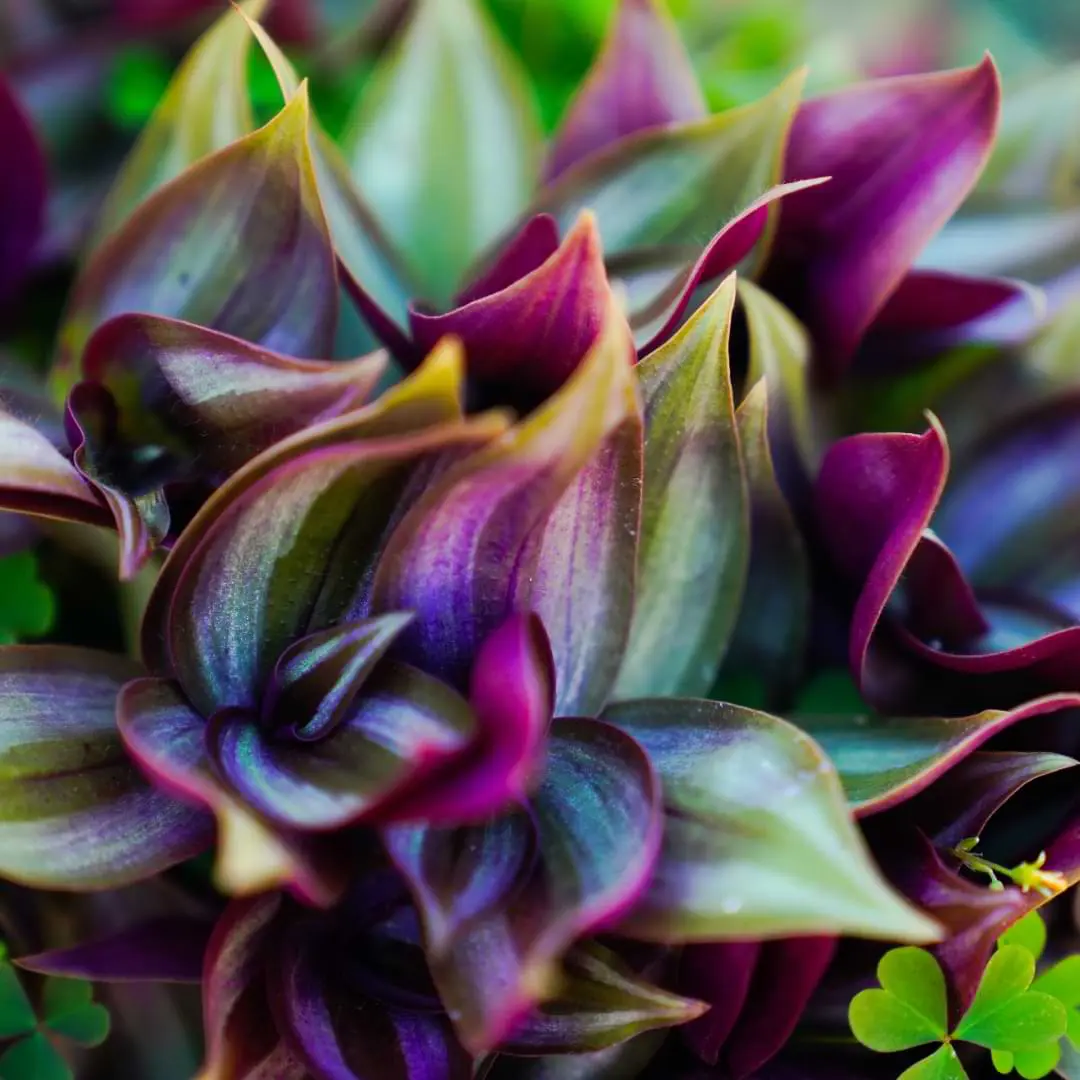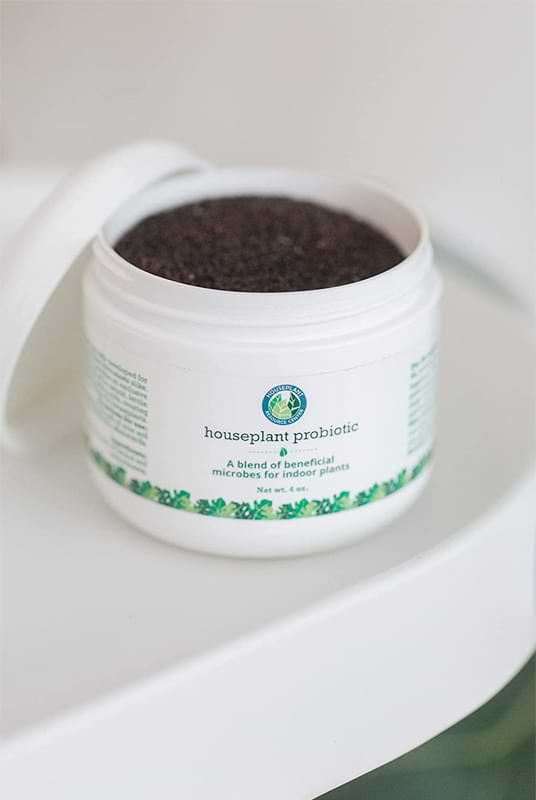Table of Contents
Why is My Wandering Jew Dying? Common Causes & How To Revive It
“Why is my wandering Jew dying?” is one of the most common questions I get asked by plant owners. Nothing is more devastating than seeing its uniquely colored, cascading leaves turn into a dull, withered mess. But don’t worry; it’s not too late to revive your plant and bring it back to its former glory, whether the cause is environmental, nutrient-related, or pest infestation.
Why Your Wandering Jew Dying Is Happening
Wilting Leaves & Stems
Trailing or cascading stems combined with waxy or velvety heart-shaped leaves indicate a healthy wandering Jew plant. But, when limpness or wilting of the leaves and stem starts to occur, this is a sure sign that your plant is not doing well.
Yellow Leaves
Deep green leaves with hues of purple and silver mean your wandering Jew plant is getting everything needed to enhance the ambiance of the space it is in. But when those colors start to fade or turn yellow, it is a clear sign of chlorosis in your plant that, left untreated, could be fatal.
Browning Leaves
Browning is a sure sign that your wandering Jew is dying. Whether it’s the leaf tips, edges, or even the whole leaf, browning indicates a serious issue with plant health that will lead to death if not addressed immediately.
Leaf Drop
Natural growth cycles for the wandering Jew mean leaves can drop from the plant. However, if you notice excessive leaf drop that is not a part of its regular cycle, usually late in the summer season, this could be an indication of stress or disease killing your plant.
Stunted Growth
Assuming optimal watering, light, and nutrition levels are steady, your wandering Jew plant should grow at least 1″ (2.5cm) per week during its active growing season. If you notice stunted growth or lack of new development, it could be a sign that your plant is struggling to maintain its health.
Pests
One of the benefits of the wandering Jew is that pest infestations are rare. This has to do with the plant’s ability to remove and store excess minerals in its leaves, making it less appealing to most insects. That said, it isn’t completely impervious to pests like aphids and spider mites that prefer the warm, humid environment these plants thrive in. And when an infestation does happen, it can quickly lead to the death of your plant.
Root Rot
In an attempt to keep your wandering Jew plant well hydrated, you may have inadvertently created the perfect conditions for root rot. This is a critical problem that will cause your plant to die faster than other common issues.

Wandering Jew Dying? How to Revive Your Plant
Balance watering routine.
The thickets, rainforest, and wetland environments where wild wandering Jew plants thrive offer rich, damp soil that doesn’t dry out completely. Growers often overcompensate to maintain this level of moisture by overwatering. Too much water can starve a plant of oxygen, causing root rot, wilting or loss of vigor, and even death.
In an attempt to not drown the plant, many make the mistake of not giving it enough water. As a result, the plant dries out, displaying common signs such as browning leaves, drooping, and stunted growth.
Ideally, the watering routine for your wandering Jew should be based on soil dryness. If you don’t have a moisture meter, poke into the soil about half an inch and add water if it feels dry to the touch. Make sure the watering is thorough and stop when liquid runs out of the drainage holes.
Enhance Soil Conditions
The native habitats of the wandering Jew plant vary greatly, but they all have one thing in common: rich soil full of micronutrients and organic green waste. As your plant grows, it may require more nutrients than the soil can provide, leading to common signs that your wandering Jew is dying, such as stunted growth, root rot, and yellow leaves.
While garden variety potting mixes are fine for most houseplants, they don’t always have a unique soil composition that mimics the natural habitats of wandering Jew plants. Consider repotting in premium indoor soil containing perlite, coco coir, biochar, and organic green waste.
These soil formulas also provide excellent drainage that makes over or underwatering less likely.
Pro Tip: If common signs of wandering Jew death, such as stunted growth, yellow leaves, or browning, are present in an extreme way, invest in a liquid plant fertilizer that helps to restore trace minerals and promote new growth.
Enact more efficient temperature control.
The ideal temperature for a wandering Jew plant is 60 to 80 F (15 to 27 C) or USDA Plant Hardiness zones that average a 9 to 11 on the scale. The temperature-related signs of a wandering Jew dying, such as drooping or browning, often occur based on the plant’s location or the season of the region it’s in.
Though most indoor spaces are kept at a level wandering Jew plants can accommodate, unnoticed drafts from air conditioners, vents, and windowsills hinder plant health. If you see signs of temperature-induced plant decline, you probably keep it in the wrong place. Consider moving it to a space with better temperature control, such as a side table near the window or behind where a door opens and closes.
If your wandering Jew is outside and the season starts to change, consider moving it indoors or covering it with a cloth to prevent exposure to frost or extreme temperatures.
Maintain better humidity levels.
It’s no secret that a wandering Jew loves to be humid. So when signs such as browning or drooping occur, humidity levels are commonly to blame. The plant is not getting enough moisture in the air and compensates by sucking it from its leaves, causing them to wilt or fall off.
A 70% humidity level is ideal, but unfortunately, this is much higher than the 40-60% range health experts recommend keeping an indoor space at. So, your best bet will be to mist your plant daily or every other day, depending on how dry the air is in your home. You can also move it to a more humid room like your bathroom, kitchen, or laundry room.
Adjust lighting.
A popular plant for ground covers, wandering Jews grow low to the ground and crawl across and under bushes in the wild. This means they thrive on bright yet indirect sunlight. So, if you notice signs such as stunted growth, browning, or yellowing leaves, it may be because it’s being kept in a spot that is overwhelmingly bright and not just natural.
If your plant is in a sunny window, consider moving it further back into the room or away from the window or investing in curtains to control light intensity. You can also consider hanging it in the corners of your room for even light exposure.
Just because the plant grows lower to the ground without a ton of exposure to sunlight doesn’t mean it can do without completely. Remember that wherever you place it should give it 6 to 7 hours of indirect, bright light. This may mean moving it around as the seasons change and light intensity shifts.
Support nutrient deficiencies.
Almost all of the common issues that can make you wonder, “Why is my wandering Jew dying?” affect the ability of the plant to properly metabolize nutrients needed for healthy growth. As such, if you enacted all of the above solutions and still notice distress signs such as wilting, browning leaves, or stunted growth, chances are your plant is not getting enough nutrients, enzymes, or minerals to produce flowers or grow leaves.
Because a wandering Jew plant thrives in moist soil rich with organic green waste, you might consider nitrogen-boosting plant food to help revive it. Additionally, a houseplant multivitamin can do wonders for restoring plant health as it contains essential trace minerals needed for optimal plant growth.
Pro Tip: Use a plant probiotic in conjunction with premium potting soil and plant food to increase nutrient absorption so the plant can thrive.
Protect against pests & diseases.
The pest-resistant qualities of the wandering Jew adapted from its low-to-the-ground natural habits aren’t always effective when growing in a potted indoor environment. As such, if you notice leaf discoloration, holes, or speckled leaves unrelated to watering or humidity levels, it is likely due to pests like aphids and mites.
To check if this is the issue:
- Isolate the plant and clean it with an organic leaf armor that removes any harmful insects from the leaves.
- Maintain regular watering and humidity levels so the plant can heal and get stronger.
- If that restores the plant’s health, continue using preventive measures such as leaf shine wipes to ensure your wandering Jew lives its lifespan of 2-3 years.
While pest-resistant, the wandering Jew is still susceptible to diseases and fungi that can cause severe damage to critical plant systems that regulate nutrient intake and water levels. Common signs of disease include white mold, spots on leaves and flowers, and damage to roots. You’ll want to enact all the above-mentioned solutions to help restore the plant’s health or replace it with a new, healthy one.
Pro Tip: When checking for pests and diseases, look at the root system as well. Root rot is a common problem for wandering Jews and can be easily detected by brown or black, mushy roots. If this is the case, prune away the infected plant parts and treat the wounds with a root supplement for faster, more robust recovery.
Repot your plant.
While wandering Jew plants don’t mind a little crowding, extreme pot-bound conditions can cause root rot and stunt plant growth. With less room for the root system to expand, the plant will eventually stop growing and deteriorate. If you notice that your wandering Jew is pot-bound with an abundance of roots visible on the surface or through the drainage holes, it’s time for a larger pot.
To repot your wandering Jew:
- Carefully remove the plant from its current pot and gently tease out the roots.
- If there are any decayed or damaged roots, prune them away with clean scissors to prevent further spread of root rot.
- Place the plant in a new pot filled with fresh soil and water thoroughly to help settle it into its new home.
Accept that it is a natural part of the life cycle.
Spent leaves are a natural part of the wandering Jew’s life cycle and sometimes make it seem like the plant is dying. However, as long as new growth continues to appear, there is no need to worry.
Remember that the wandering Jew only has a lifespan of two or three years, so it is normal for the plant to die eventually. If the plant isn’t showing signs of stress and all other solutions have been enacted, you have one option: propagate.
Propagating your wandering Jew is an easy process, allowing you to have a new plant from the parent plant. Simply cut off a healthy stem that has at least two leaves and a node, place it in water or potting soil near a bright light source, and wait for roots to develop. When root growth occurs, you can transplant the cutting to its own pot and continue to enjoy your beautiful wandering Jew plant for years to come.
Pro Tip: Guarantee successful growth from cuttings with a propagation promoter. Whether performing the process in soil or water, this formula will ensure root growth and help prevent diseases that could kill the plant before it has a chance to thrive.
Wandering Jew Plant FAQ
- Why is my wandering Jew dying in the winter months?
Plant growth is less active in winter months due to decreased sunlight and lower temperatures. You can help your wandering Jew survive by providing ample light and keeping it in a slightly warmer environment.
- Is my wandering Jew dying because I overwater it?
Yes, overwatering can cause root rot and ultimately kill the plant. To avoid overwatering check the top half inch of soil and add water only if it is dry. Also make sure to use a pot with well draining soil.
- How long does it take for a wandering Jew plant to recover from root rot?
It can take several weeks for a wandering Jew plant to recover from root rot, depending on the severity of the condition. It is vital to address the issue as soon as possible and provide proper nutrients to help the plant heal.
- Will leaves grow back on a wandering Jew plant?
New leaf growth is always possible but don’t expect dying or dead leaves to come back to life suddenly. If your plant is full of both new growth and old leaves, it’s best to prune off the old leaves that are no longer contributing to the plant’s health.
Save Your Wandering Jew No Matter the Season
As a beloved houseplant, the wandering Jew adds beauty and charm to any indoor space. By understanding the plant’s needs and common issues, you can ensure its longevity and enjoy its stunning foliage year-round.
Love growing houseplants? Learn everything needed to keep them thriving with a subscription to our free newsletter. With tips, tricks, and updates about new shop products, you’ll never have to struggle to care for your indoor plants again. Sign up now and join the community of green thumbs who share your passion for growing beautiful, healthy plants.
More Houseplant Resources
Looking for more houseplant info? We highly recommend our super informative (and FREE!) Houseplants for Beginners Webinar. Check out our community of other plant lovers in our Facebook group. And if you’re looking for handy go-to reference for all your houseplant needs, check out our book, The Last Houseplant Book You Will Ever Need.





